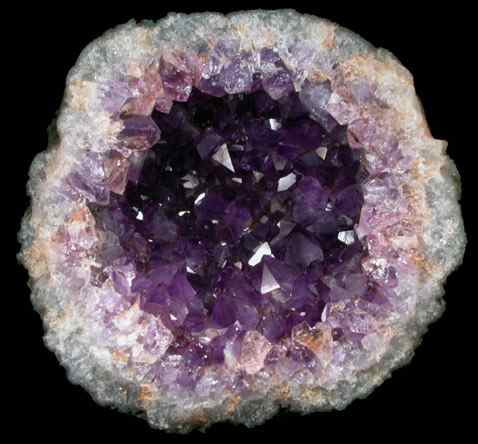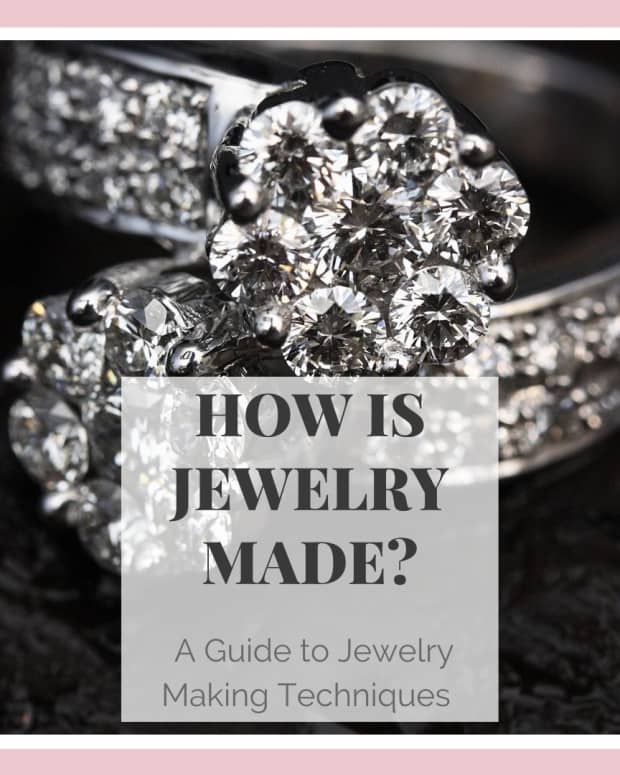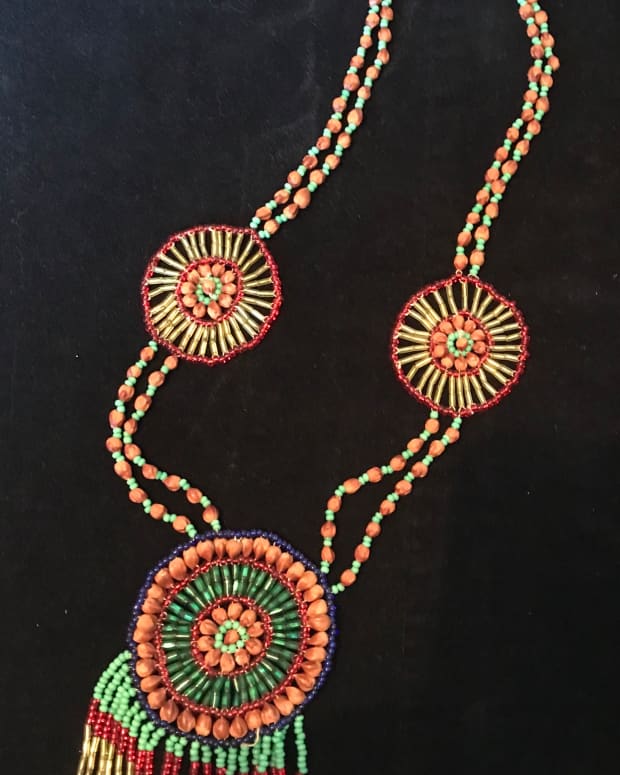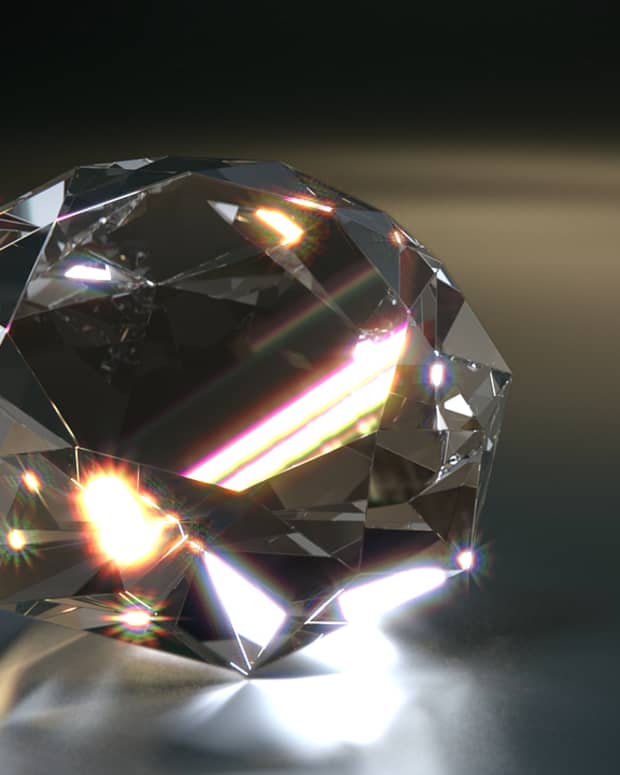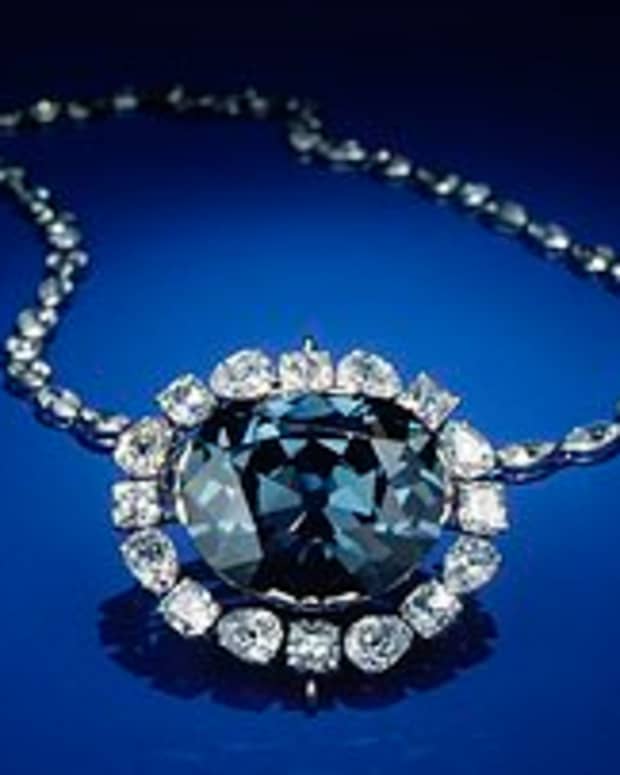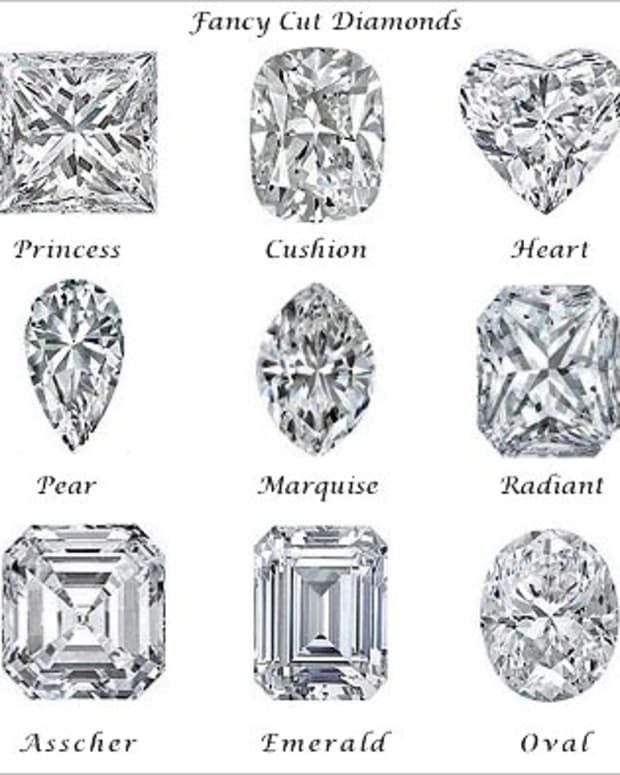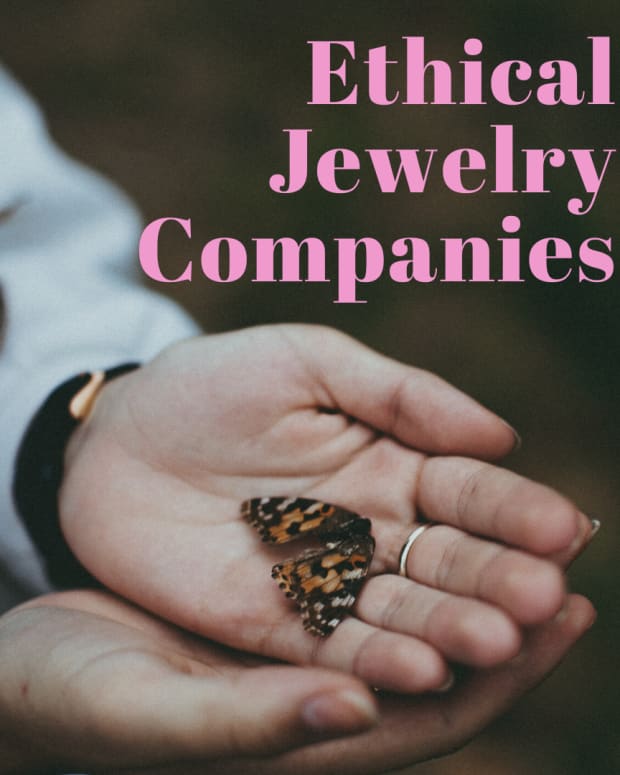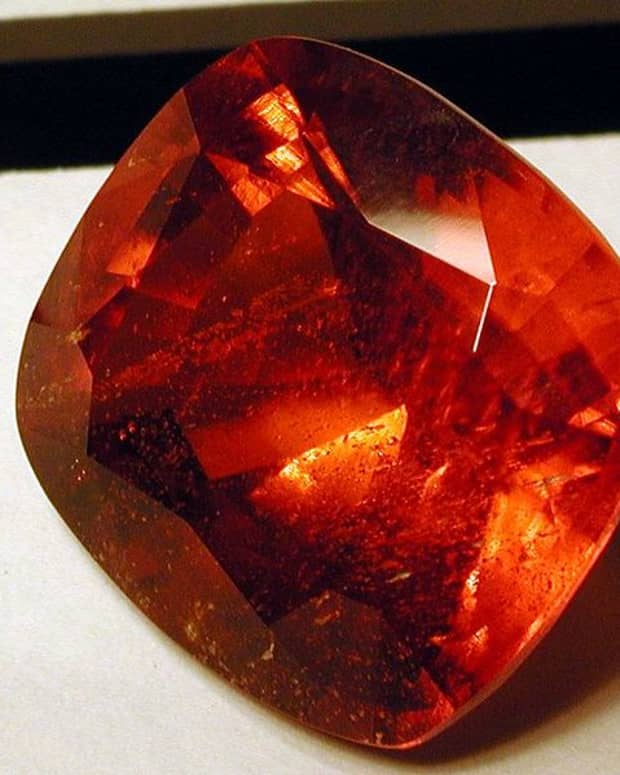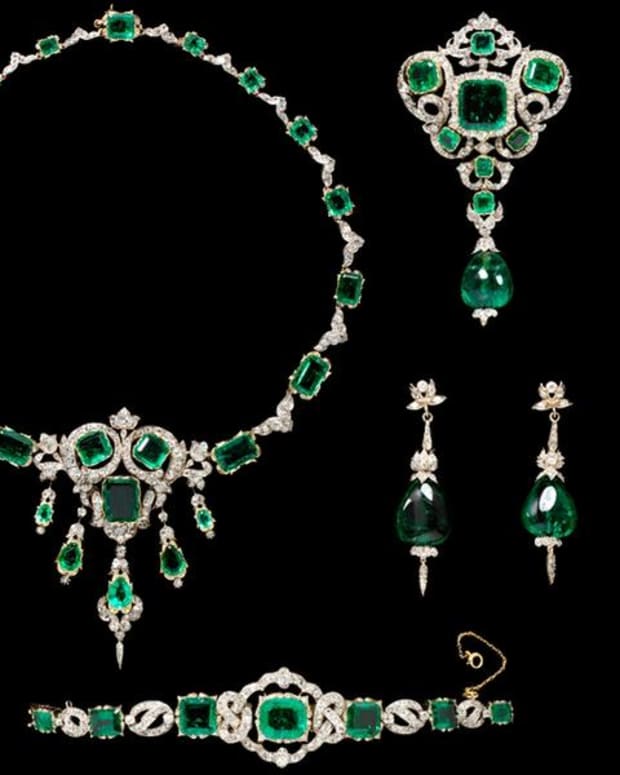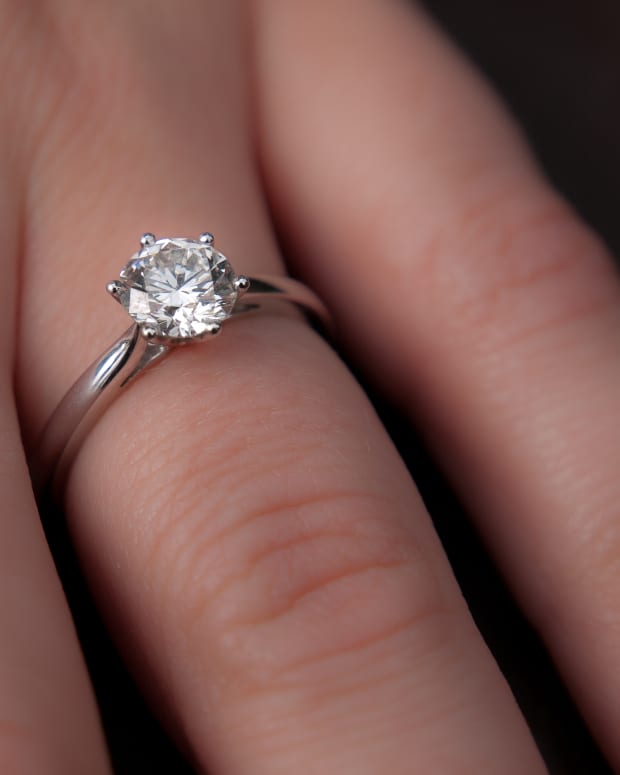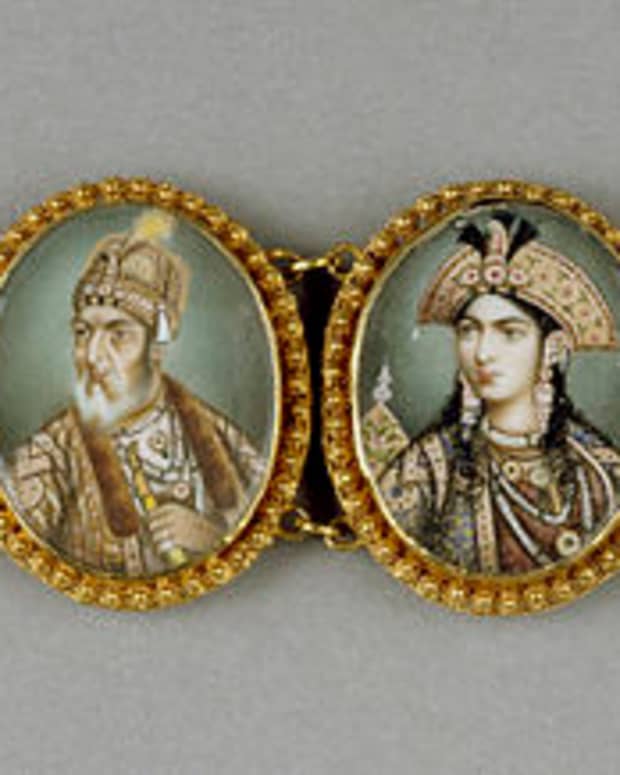Amethyst: A Passion for Purple
Ruby Lane specializes in antiques and art, vintage collectibles, and jewelry.
Amethyst, the birthstone for February, is one of the most popular colored gemstones. Today, Amethyst can be found in many moderately priced pieces of jewelry. Until the 19th century, Amethyst held a very elite place in the gemstone world, being considered one of the 5 "Cardinal" gems, along with Diamond, Ruby, Sapphire, and Emerald.
Amethyst in the Ancient World
Amethyst has been used in jewelry since at least the time of the Egyptian Empire. Some Amethyst mining may have occurred as early as 3000 BCE. The stone was widely used during the 11th Dynasty and Middle Kingdom period, from around 2000 BCE to 1650 BCE. Wadi-el-Hudi was an important mining locality during at the time but appears to have been depleted during this period, and the popularity and availability of Amethyst waned. It was probably during this period that the purple color first became associated with royalty. There was an active trade in Amethyst in the Aegean, and the Romans operated some mines during the Roman period of Egyptian history.
The traditional association with Amethyst continues, with Amethyst being featured in several pieces of British Royal Family regalia, including some Orbs. The Royal Scepter contains an impressive Amethyst. However, it is overshadowed by the 530 carat Cullinan I diamond.
Amethyst is mentioned as one of the stones in the High Priest’s breastplate in the Book of Exodus. The Hebrew "Ahlamah," may mean "strong," or may refer to a location where Amethyst was mined. This was translated in the Greek texts of the Book to "Amethystos." All stones had an association with the Twelve Tribes of Israel, which were identified by engraving on the stones, and Amethyst is associated with the Tribe of Benjamin.
Amethyst is also referenced in Greek and Roman mythology, in similar stories. In the Greek version, the maiden Amethystos is pursued by the god Dionysus. The goddess Artemis turns the maiden into a statue of colorless Quartz, to protect her from Dionysus. A remorseful Dionysus pours his wine on the statue, turning it purple. In the Roman version, an angry Bacchus swears that the first person he encounters will be devoured by tigers. This person is the maiden Amethysta, who is turned to colorless Quartz by the goddess Diana. Bacchus attempts to revive the maiden with wine but only succeeds in changing her color.
The word "amethystos" literally means "not intoxicated." Whether the legend springs from this meaning or the meaning from the legend is unclear. However, sobriety and Amethyst have an association that dates back to this time. Drinking wine from an Amethyst chalice was said to prevent intoxication. Perhaps a crafty ruler in the midst of negotiations drank water from such a goblet, only appearing to drink wine, and surprised everyone with his ability to stay sober!
Amethyst has always been favored as a Christian Ecclesiastical stone, often featured in the rings of Bishops. The assurance of sobriety is part of this tradition, as well.
The Egyptians, Phoenicians, and Greeks mastered various aspects of gem carving and engraving, with the Greeks mastering intaglio and relief carving by the 5th Century BCE. The Romans were skilled in engraving and carving gems, and Amethyst was one they often used. An exquisitely carved oval Amethyst, depicting the head of the Roman Emperor Carcalla exists. It was later modified, with the addition of an engraved cross and inscription, in an attempt to create an association with St. Peter.
Amethyst in History
The history of gem cutting leads us to Idar-Oberstein in Germany. This area was clearly established as a mining locality for Amethyst and Agate by the 14th century. Some accounts claim that the area was mined since the time of the Roman Empire. Some Amethyst was said to come from the Zillertal Alps, on the Italian border. Idar-Oberstein had wonderful water power for their gem processing, provided by the river Nahe. In addition to cutting and polishing, the craftsmen here mastered the secrets of dyeing Agate, which they maintained until the early 20th century.
As local sources for gem material for processing became more scarce, hard times fell on the area. Some locals went to Brazil, where massive new gem finds provided all the material the cutters would ever need. Several firms with German and Swiss roots are still major players in the gem markets of South America. Idar-Oberstein has also established itself as the training ground for many of the world’s leading colored gem cutters of the 20th Century, such as the legendary Bernd Munsteiner.
While the connections to the massive finds of gem materials in Brazil, and other areas of South America, saved Idar-Oberstein as a cutting center, the volume of material impacted availability and prices. The large Brazilian discoveries date to around 1725, but the higher prices of the material was maintained until later, in the 19th century. Amethyst eventually declined in value. The gemologist, Max Bauer, commented on the change in valuation of a notable piece of Amethyst jewelry in 1904. A bracelet owned by England’s Queen Charlotte had been valued at more than £2000 in the early 19th century was estimated by Bauer to be worth only £100 in the early 20th Century. George III was said to have purchased some expensive Amethyst pieces for his wife, Queen Charlotte.
Prices were high enough that Russia’s Catherine the Great encouraged exploration of the Ural Mountains for Amethyst. Large finds of high-quality material were discovered, but not until 1799, several years after Catherine’s death.
Amethyst was quite popular in the jewelry of the late 19th and early 20th century. This may have been partially due to the abundance of moderately proceed stones, but the tastes of Art Nouveau movement also aided the popularity. Irises, violets, and pansies were favored in artwork and jewelry creations of the era and lent themselves to co-ordination with the color range of Amethyst.
One of the more unique jewelry styles at the turn of the century also used Amethyst: Suffragette Jewelry. The various groups calling for equality for women coalesced in late 19th Century England, forming the National Union of Women’s Suffrage Societies. A more outspoken group, led by Emmeline Pankhurst formed in 1903, the Women’s Social and Political Union. The official colors of purple, white, and green were announced in 1908, although they had been in use for some time. The purple represented dignity, with purity and hope being represented by the white and green colors. Amethyst was often used for the purple color on Suffragette Jewelry, and Peridot saw wide use for the green in some pieces. Little evidence exists that Suffragette Jewelry was produced before 1908, when Mappin & Webb, a royal jeweler, introduced a catalog of the pieces.
Read More From Bellatory
The movement to get the vote for women in England was largely suspended during World War I, and limited suffrage was granted in 1918, then expanded in 1928. In the United States, an amendment was passed in 1919 to allow women to vote and became fully ratified as law in 1920. However, Suffragette Jewelry never had the presence in the United States that it had in the United Kingdom.
Amethyst has also been one of the favored stones for Mexican Silver jewelry of the 20th Century, and many of the masters of Taxco Silver have used the stone.
Quality and Sources
The beautiful color of Amethyst is created by iron in the mineral and the action of irradiation on the iron. This actually creates a crystal structure that varies from other members of the Quartz family. Cutters must deal carefully with Amethyst, as the color sometimes occurs in "layers" of varying intensity.
Amethyst is a dichroic mineral. This means that it may display two different colors, as light transmitted by the stone occurs in two different visible wavelengths. Both are violet, but one is a reddish violet, while the other is a bluish violet. When heated, Amethyst may turn the color of Citrine and loses its dichroism.
Cloudy Amethyst may become clearer and change color when treated at relatively low temperatures. Higher temperatures can create Citrine like colors in clearer Amethyst. The lower temperatures tend to create darker colors, similar to Smoky Quartz, while the high temperature treated material will often turn a more yellow color.
Ametrine, a gem material that shows both the colors of Amethyst and Citrine, can be created with heat treatment of Amethyst. Ametrine may also occur in nature but is not common. A green quartz has become popular in recent years and is often marketed as Green Amethyst. This is considered a misnomer by many in the gem field, who prefer the proper name for the material, Prasiolite.
Synthetic Amethyst is produced by the irradiation on clear synthetic Quartz. The material normally imitates the colors of the finest Amethyst and is very hard to separate from genuine high-quality Amethyst.
Amethyst is found abundantly in many Brazilian mines, and in neighboring Uruguay. India, Madagascar, and Zambia are also large producers. Russia still produces fine quality Amethyst. It is also found in the United States, Canada, and Mexico.
Amethyst may form in the pockets of geodes, and of geode-like cavities in the Earth. Pockets of over 5000 cubic feet have been found, lined with Amethyst. The largest known Amethyst lined geode, the Empress of Uruguay, is on display in Australia. It was recently vandalized, with several golf ball size clusters removed. The piece is approximately 11 feet long and weighs about 2 ½ tons, and has surprisingly high-quality crystals.
Specimens weighing over 200 kilograms have been recovered, although 700 carats is considered quite large for gem-grade rough, perhaps the size of a fist. Specimens from North Carolina have weighed in at 165 pounds.
Amethyst Today
Amethyst is a popular and plentiful gem material. As new finds become available, exciting new pieces will become available on the market. However, by its own history, Amethyst has proved it is worthy of royal treatment.
© 2012 ruby lane
Comments
Andrea Marshall on May 30, 2012:
What a thorough and interesting article! Very well done!
Nancy Yager from Hamburg, New York on May 01, 2012:
I too love amethyst. Great pictures in your hub. My next adventure is to go digging for amethysts. There is an Amethyst mine in Georgia!
ayliss08 from Guangzhou, Guangdong, China on February 10, 2012:
Interesting and informative hub! Thanks for sharing the knowledge of amethyst. I like the beautiful and stunning amethyst. Actually, I have a collection of amethyst jewelry in my wardrobe, and I often wear them to complement my overal look. Voted up, and Cheers!

